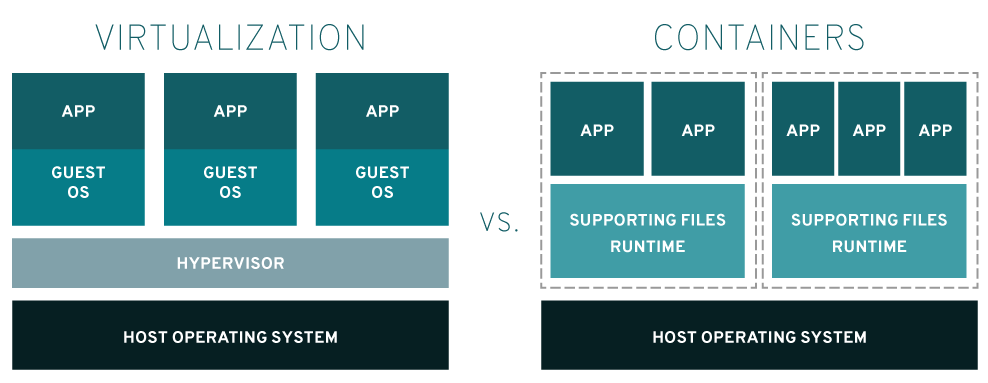LXC stands for Linux Containers and KVM is an acronym for Kernel-Based Virtual Machine. The main difference here is that virtual machines require their own kernel instance to run while containers share the same kernel.
However, each container still acts as its own separate environment with their own respective file systems.
What this means is that containers are virtualization at operating-system-level whereas VMs are virtualization at the hardware level.
Here at Ibmi Media, as part of our Server Management Services, we regularly help our Customers to perform VMs related queries.
Differences between LXC container and VM?
1. LXC Containers
LXC is short for Linux Containers. Containers mainly help in modularizing services or applications. Containers are a solution when there is a problem with the reliability of running the software when moving from one computing environment to another. We highly recommend them in scenarios where customers need to run multiple instances of database management, web server, etc.
The main aim of the LXC container is to create an environment as close as possible to a standard Linux installation but without the requirement for a separate kernel.
Linux containers use fewer resources as they just need to run an application. But VM's need more as it has to run the entire OS.
2. Virtual Machines
The simplest way of defining a virtual machine is creating a computer within a physical computer.
Multiple virtual machines can run at a time on the same physical computer. Each VM has its own virtual hardware, including CPUs, hard drives, and other devices.
Virtual Machines can be moved easily from one server to another, even in running state. This helps in balancing the load in servers.
Which is the best among LXC container vs VM?
Recently one of our customers approached us for choosing him the best among LXC containers and VM. Our Support Engineers suggested him to use VM as he needs to run the entire LAMP(Linux, Apache, MySQL, PHP) stack on its own server.
There are many positives and negatives when we talk about LXC containers and VMs. Today we are going to discuss some of them.
One of the main advantages of LXC containers over VM is that an application running in a container can be easily ported to a different container irrespective of the OS. But it is less secured when comparing with VM as it shares system resources.
Whereas one of the reasons for choosing VM over LCX is that we can choose and control its OS, updates, etc. Also, It provides more isolation and security.
The main difference is that VMs require their own kernel instance to run while containers share the same kernel. In other words, containers are virtualization at the operating-system-level whereas VMs is virtualization at the hardware level.
We can't choose one over the other as both are the best in their own areas, and they have their own strengths and weaknesses.
[Need urgent assistance with LXC containers? – We can help you with it. ]
Conclusion
This article will deal with the differences between LXC container and VM as well as which to choose. VMs are the best choice if you need to host multiple applications in the same environment for multiple purposes. LXC containers are preferred in cases where you have a single-purpose application environment.
KVM is hardware-level virtualization with its own kernel instance.
This allows the user to boot their own operating system of choice with no underlying or base OS.
And since each server is its own instance, they can be migrated without having to reboot.
Advantages to LXC:
1. It is easier to maintain and has very little overhead on deployment compared to a virtual machine. This allows for a much more lightweight cloud environment with LXC.
2. Containers also have a faster startup and stop speed, making them much more efficient overall.
3. Multiple containers can be deployed on the host system, where VMs are heavier on resources.
This article will deal with the differences between LXC container and VM as well as which to choose. VMs are the best choice if you need to host multiple applications in the same environment for multiple purposes. LXC containers are preferred in cases where you have a single-purpose application environment.
KVM is hardware-level virtualization with its own kernel instance.
This allows the user to boot their own operating system of choice with no underlying or base OS.
And since each server is its own instance, they can be migrated without having to reboot.
Advantages to LXC:
1. It is easier to maintain and has very little overhead on deployment compared to a virtual machine. This allows for a much more lightweight cloud environment with LXC.
2. Containers also have a faster startup and stop speed, making them much more efficient overall.
3. Multiple containers can be deployed on the host system, where VMs are heavier on resources.












